Muscle
Table of Contents
Introduction
Every kind of muscle is associated with particular physiological research, pathologies, and biological factors. They maintain you in everything, such as rushing an endurance race while keeping your body still. Additionally, the organs’ function has been preserved with assistance from the muscle cells.
Your heart pumps more than 100 times daily to keep you alive, creating an effective muscle. The organ that is responsible mainly for regulating how one moves and poses is the muscle in the skeleton. The muscular system that supports the heart, produces life in people.
The gastrointestinal, reproductive, urinary tract infections, blood flow, and pulmonary systems are all constituted of smooth muscles.
Anatomy of Skeletal Muscle
The thousands of tiny filaments that compose your muscles have been woven together. Your body’s organs move due to these fibers pulling and stretching against one another. Your body is draped in muscles that weave collectively like a quilt. To move around you as well they assist propel yourself in all directions.
Because the retracting filaments move at an angle to the muscle’s ultimate action, a muscle of a given dimension may have more spindles and, thus, greater force; yet, this results in a lesser change in length.
The substance that relates muscle tissue to tendons, which attach is called the epimysium, and it grows stronger and more collagenous at each point of attachment. Every muscle includes fascia, most commonly referred to as tendons and muscles.
3 Types of Muscles in Humans:
Skeletal:
Our bodies’ tissues, which attach to our skeletons, are only tipped with relaxing muscles so that the body’s bones can rotate and stretch. However, our neurological system contributes to complete influence over the muscles in our bones they are muscles that it is possible to control.
The highly structured substance known as muscles in the skeleton consists of many filaments organized in bunches known as myofibers. Muscular tissue forms out of bands of toned filaments that create the relevant section. A muscle cell can be identified by each myofiber, which has a process of its underlying cellular structure.
Muscle fibers can be classified into either fast oxidative (FO), fast oxidative (SO), or quick glycolytic (FG).
Cardiac:
Its contracts are not outside the controls of the autonomic nervous system, therefore being similar to the smooth muscles in that they are also multilayered and striated like muscles of the skeletal system.
pacemaker neurons can cause pulses even without the presence of an impulse from the nerves. Considering cardiac muscle maintains a lot of mitochondria, myoglobin, and an adequate amount of blood that facilitates continuous aerobic energy expenditure, it is very sensitive to lack of sleep.
The cardiac muscle’s beginning source of employment is to calm and implement the heart muscles and regulate the circulatory system’s pulse.
Smooth:
Smooth muscle can be spotted on the walls of the circulatory system, as well as in the stomach, bronchi, and esophageal cavities.
Smooth muscle is designed for repeated contact. Its brisk, rhythmic contractions use muscle for operating internal organs, for example, the esophagus to move food or the artery walls to constrict during arterial narrowing.
Function
What are muscles’ Functions?
The contracting muscles in your body move. They grow in two different ways:
- Voluntary movements: Actions that are purposely directed by the brain and done by skeletal muscles can be described as voluntary movements.
- Involuntary movements: You can control voluntary movements. Your muscles cause your whole being to move in the direction of which you have chosen.
Your muscles apply plenty of voluntary and involuntary tasks vital to practically every system and process inside your body. Various muscle types can help with the following:
- Vision.
- Hearing.
- Breathing, speaking, and swallowing.
- The digestion of food and garbage removal (bowel movements and flushing).
- Getting up, sitting, and moving.
- delivering a baby.
Myosin and Actin
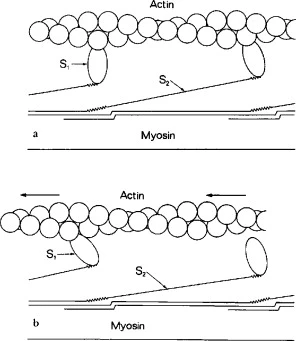
- Actin filaments are in a position to control a variety of cell movements normally when used with myosin fiber Filaments containing myosin get organized into sarcomeres in the muscles of the heart system and the core element of contraction.
- Longer, multinucleated cells described as skeletal muscle cells elongate into the hundreds or millions of feet along the tissue’s length.
- Smooth muscular cells have a single nucleus and have parted with their sarcomeres. They respond involuntarily and are proficient at strong, gradual jerks.
Nervous Control
All of the body’s voluntary muscle systems as well as the volunteer reflex arc pathway are administered by the somatic nervous system. The primary path is as follows
- The transmitter cells that transport the signal to contract muscles are termed lower motor brain neurons, or peripheral nerves.
- The messenger axon cell at the neuromuscular junction promotes the release of suitable muscle cells.
Exercise
Physical training can result in changes to muscle performance as well as variations in the way skeletal muscles appear. On the other hand, lethargy can lead to a reduction in both muscle mass and performance. Muscles do not produce new cells as they develop, even though muscle cells may shrink in size. A process known as expansion provides structural proteins to muscle fibers, increasing cell dimensions. The types of exercises taken have varying impacts on the muscles.
On another hand, degeneration is defined as an impairment in muscle mass caused by the loss of protein structure materials.
- Myoglobin, the blood vessels in slow-twitch fibers, and mitochondrial respiration all expand during endurance exercise. Compared to the other fiber types, athletes with endurance have greater quantities of slow twitch fibers.
- Exercise with resistance creates hypertrophy. Fast-twitch nerve fibers are more prevalent in muscles that supply power than cells.
Disease
Muscle Atrophy
The visual provides a schematic illustration of the thin-filament packing amount and spacing in half of it from a weakened muscle and half of the direction from normal pre-flight muscles surviving a 17-day human space route.

- Exercise and an increased diet can frequently rebuild this form of decline.
- The population most at risk covers, those who have neurological diseases or other conditions that prevent movement, suffer from a stroke or other brain damage, are in an environment with no gravity, such as space travel, or have health issues that limit their ability to move. Sarcopenia, or age-related muscular atrophy, is a sign of muscle fibers dying and being replaced by connective and fatty tissues. It happens when one gets beyond and plays a significant role in the appearance of weakness.
Conditions and Disorders
Your muscles are also impacted by some kinds of physical problems, such as:
- Fibromyalgia.
- Myopathies.
- Myositis and polymyositis.
- Infections, including the flu (influenza) and COVID-19.
- Amyotrophic later sclerosis (ALS).
- Cardiovascular disease.
Muscle symptoms
The following are the most affected symptoms of an acute illness or muscle injury:
- Muscle pain.
- Muscle weakness.
- Stiffness.
- muscle spasm (cramps).
- Swelling.
- Bruising.
- Skin discoloration
Muscle tests
A healthcare provider can apply a few strategies to identify injuries or diseases affecting the muscles:
- Blood tests.
- Electromyography (EMG).
- Magnetic resonance imaging (MRI).
- Ultrasound.
- Muscle biopsy.
How do healthcare workers solve muscular problems?
The treatment known as RICE is widely used at home to treat a variety of strengths and health problems.
- Rest: Try to stay prominent in any actions that hurt you. While the injured section of your body heals, try not to misuse it.
- Ice: At least four times a day, for 15 minutes at a time, apply a cold compress to your injuries. To prevent ice packs from emerging into contact with your skin, wrap them in a towel or other thin cloth in the air.
- Compression: Apply an elastic bandage to the influencing muscle to help decrease the swelling. You could learn how to apply a compression bandage comfortably from your physician.
- Elevation: As frequently as possible, keep the affected muscle previously the level of your cardiovascular system.
FAQs
Any muscle in the human anatomy is composed of the muscular system, which is also the organ system.
Hormones like testosterone and higher usage (exercise) are perhaps the causes of muscle hypertrophy.
The individual muscle fibers get more expansive or more restricted by the size of the muscle.
As a result, strength a lot builds as muscular tissue grows, while strength typically decreases as the entire muscle bulk decreases.
Beginning with generating blood and providing movement to holding large weights or delivering birth, muscles serve many different kinds of purposes. This movement could be involuntary—done without our conscious expertise—or voluntary, meaning it is made actively.
A layer of connective tissue known as the material known as per surrounds each muscle’s fascicles, which are individual muscle fibers.
References
- National Cancer Institute (U.S.). Muscle Groups (https://training.seer.cancer.gov/anatomy/muscular/groups/). Accessed 1/23/2024
- National Library of Medicine (U.S.). Muscle Disorders (https://medlineplus.gov/muscledisorders.html). Last updated 5/2/2016. Accessed 1/23/2024.
- Biology online dictionary. Myogenesis. Available from: https://www.biology-online.org/dictionary/Myogenesis (last accessed 3.6.2019)
- Teach PE Structure of Skeletal Muscle Explained in simple terms Available from: https://www.youtube.com/watch?v=SCznFaTwTPE&feature=youtu.be (last accessed 5.6.2019)
- BIO 301 Human Physiology Muscle Available from: http://people.eku.edu/ritchisong/301notes3.htm (last accessed 5.6.2019)
- Purves D, Augustine GJ, Fitzpatrick D, et al., editors. Neuroscience. 2nd edition. Sunderland (MA): Sinauer Associates; 2001. The Motor Unit.Available from: https://www.ncbi.nlm.nih.gov/books/NBK10874/
- MedlinePlus Muscle Atrophy Available from: https://medlineplus.gov/ency/article/003188.htm (last accessed 5.6.2019)
- Physical Exercise for Muscle Atrophy. Adv Exp Med Biol. 2018;1088:529-545. doi: 10.1007/978-981-13-1435-3_24. Available from: https://www.ncbi.nlm.nih.gov/m/pubmed/30390268/ (last accessed 6.6.2019)
- Myke Tyler Anatomy & Physiology | Adaptations to Exercise: The Muscular System Available from: https://www.youtube.com/watch?v=IM-zC4EVNsY&app=desktop (last accessed 6.6.2019)


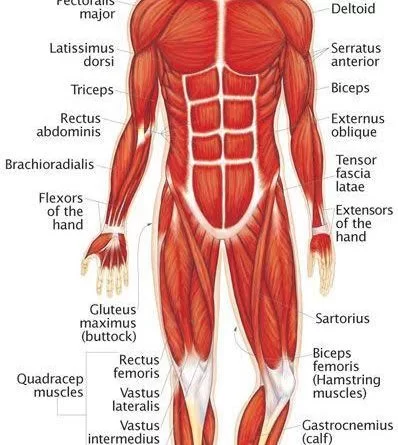
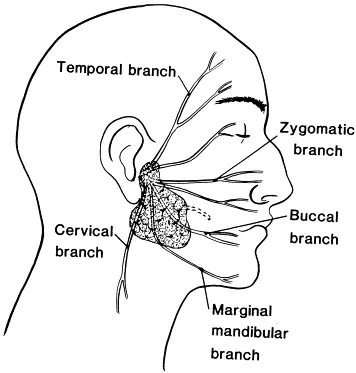
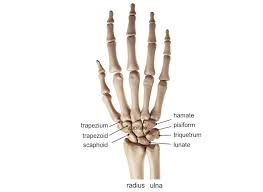
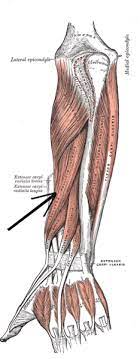
2 Comments